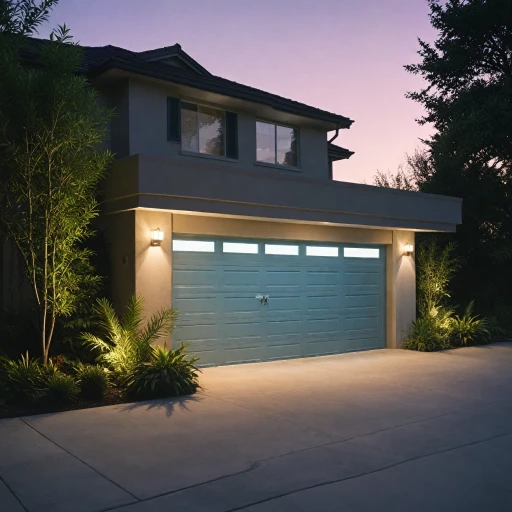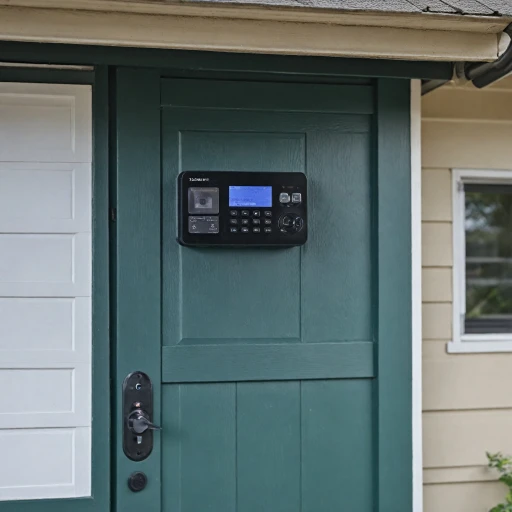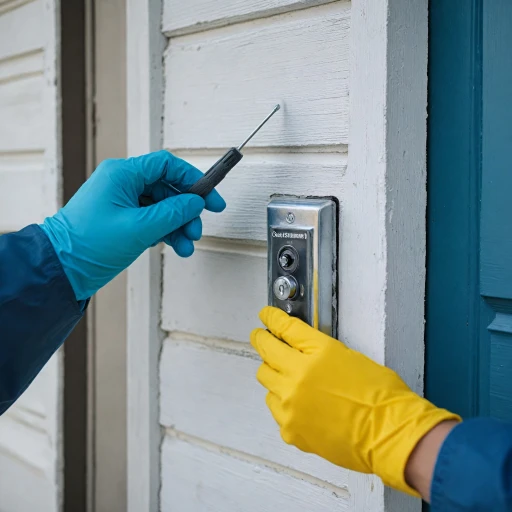
Understanding Z-Wave Technology
Exploring the World of Z-Wave Technology
Z-Wave technology is a powerful tool in enhancing your home security setup. It is a wireless communication protocol primarily designed for smart home devices, facilitating seamless communication between devices such as motion sensors, light switches, and security hubs. By employing wave technology, these devices ensure a smooth and efficient interaction, enabling better automation and control.
One main advantage of using Z-Wave is its ability to create a mesh network. Unlike traditional wifi, a Z-Wave network connects the devices through a system that allows signals to hop from one device to another, extending the range and reliability of your home security system. This becomes particularly advantageous in large homes or spaces that require long-range connectivity. Additionally, Z-Wave technology minimizes signal interference, ensuring that your smart home devices, such as motion detectors and door sensors, communicate effectively.
Moreover, Z-Wave sensors are known for their lower power consumption, which translates into a longer battery life for devices such as the Ecolink Wave Motion Sensor. Utilizing a hub, Z-Wave allows for sophisticated automation; for instance, you could automate a pir motion sensor to toggle light switches when movement is detected, enhancing both security and convenience.
For those beginning their journey into a smart home setup, Z-Wave provides an accessible and efficient entry point into wireless home automation. Although regular price might vary, the unit price can be justified by the enhanced security and control offered by Z-Wave devices, making it a cost-effective investment for those seeking a comprehensive security system.
To discover more on how to enhance your smart home setup with features like automatic light switches, you might find this resource on home automation helpful.
Benefits of Z-Wave Motion Sensors
Advantages of Embracing Z-Wave Motion Sensors
Z-Wave motion sensors offer a range of benefits that make them a popular choice for enhancing home security systems. When exploring options for smart home technology, you’ll find that Z-Wave devices provide numerous features that cater to both safety and convenience.
One of the most appealing aspects of Z-Wave technology is its exceptional long-range performance. Unlike other devices, Z-Wave motion sensors ensure extensive coverage, making them suitable for larger households or areas with multiple security needs. This long-range capacity allows you to connect your motion sensor to various smart hubs, delivering a seamless security network.
Battery life is often a concern with smart devices, but many Z-Wave motion sensors are built to last longer periods without frequent battery replacements. The ecolink wave motion sensor, for example, is known for its impressive battery performance, reducing maintenance issues and ensuring continuous vigilance.
Customization and control are at the fingertips of homeowners when utilizing sensor ecolink devices. Z-Wave technology allows for integration with a variety of systems, meaning you can easily toggle lights, lock doors, and manage other connected devices through a simple app interface or smart control hub. No matter the unit price or sale price, investing in this smarter setup offers peace of mind and convenience.
Moreover, advanced features like pet immune motion detection help to minimize false alarms. If you have a furry friend at home, choosing a pet-friendly Z-Wave motion sensor is crucial to avoid unnecessary alerts triggered by your pet wandering through the house.
Integrating Z-Wave Motion Sensors with Home Security Cameras
Seamless Integration for Enhanced Home Security
Integrating Z-Wave motion sensors with home security cameras is a strategic move to bolster your security framework. Z-Wave technology allows these sensors to communicate effectively with your existing smart home devices, creating a cohesive environment where motion detected by sensors can trigger your cameras to start recording. This not only provides real-time monitoring but also ensures comprehensive coverage of your home environment. When choosing to integrate these motion sensors, it's essential to consider compatibility. Most Z-Wave motion sensors are compatible with a wide range of security cameras and hubs, allowing for efficient control through a single interface. Look for options like the Ecolink wave sensor, known for its reliability and long battery life. Opt for motion detectors that offer features such as pet immunity to avoid unnecessary alerts and integrate seamlessly with your preferred control systems. The integration process typically involves connecting the sensors to your home's Z-Wave hub, enabling them to communicate with your security cameras. This setup can also allow for the toggle of light switches or the activation of other smart devices, further enhancing your security measures. Utilizing a motion sensor that includes a PIR motion feature ensures accurate detection and minimizes false alarms. For those new to smart home integration, focusing on user-friendly devices that offer step-by-step instructions can facilitate a smooth setup. Additionally, many units on the market fall within a reasonable price range, often available at a unit price or sale price during special promotions. Checking the regular price versus the sale price can provide insight into potential savings. Overall, the integration of Z-Wave motion sensors with home security cameras enhances safety, providing both security and convenience in a smart home environment. For more insights into how smart devices can transform your home security, visit Enhancing Home Security with Bosch Motion Detectors.Choosing the Right Z-Wave Motion Sensor for Your Home
Factors to Consider When Choosing Wave Motion Sensors
Selecting the right Z-Wave motion sensor for your home is crucial to ensuring optimal security and functionality. There are several factors you should consider when making your choice:- Compatibility: Ensure the sensor is compatible with your current home automation hub. Some sensors, like the Ecolink wave models, offer seamless integration with popular systems.
- Range and Coverage: Consider a motion sensor with a long-range capability if you have large or multiple areas to cover. Long-range wave sensors can help protect larger homes by covering more ground efficiently.
- Pet Immunity: If you have pets, select a pet immune motion detector. This feature is designed to minimize false alarms caused by small animals moving around the house.
- Battery Life: Look for sensors with extended battery life to reduce maintenance frequency. PIR motion sensors typically have better battery longevity.
- Installation: Choose a sensor that is easy to install. Many unit options are designed for simple installation, allowing homeowners to mount them without professional help.
- Cost: Compare the regular price with available sale options. Ensure that the unit price fits within your budget while delivering the features you need. Look out for sale prices that offer the best value for your money.
Installation Tips for Z-Wave Motion Sensors
Tips for a Successful Installation
Setting up your Z-Wave motion sensors optimally can be the cornerstone of a robust home security system. Follow these practical steps to ensure your smart home devices function seamlessly:- Select the Ideal Location: Place motion sensors at key entry points like doors and main windows. For best results, position them at a height of around six to eight feet to maximize coverage and motion detection capabilities.
- Verify Compatibility: Ensure that your chosen Z-Wave hub is compatible with your sensor of choice—be it an Ecolink sensor or another reliable brand. Compatibility can influence the efficiency of communication between devices within your smart home network.
- Consider Power Needs: Installation should account for battery life. Ecolink and other high-quality sensors can offer extended battery longevity, often exceeding two years in regular use.
- Prevent False Alarms: To avoid unnecessary triggers, opt for pet immune sensors if you have animals in the home. These devices can differentiate between pets and intruders, minimizing false alarms.
- Optimize Placement: Avoid installing sensors facing direct sources of heat, like windows prone to direct sunlight or air vents, as this can result in false alerts.
- Test the Activation: After installation, conduct regular testing protocols. Walk through each sensor’s coverage area to ensure they activate and communicate with your home security system as intended.
- Integration Steps: If your system includes smart light switches, ensure they toggle correctly in response to motion detection signaling from your Z-Wave network.
Troubleshooting Common Issues with Z-Wave Motion Sensors
Resolving Common Z-Wave Motion Sensor Challenges
When integrating Z-Wave motion sensors into your home security setup, it’s important to prepare for some common issues that may arise. Understanding and addressing these problems ensures your system operates smoothly, offering peace of mind.- Connectivity Issues: The Z-Wave hub is the central node that links all Z-Wave devices, including motion sensors, within the network. If there's a connection problem, ensure your hub is within range. Remember, Z-Wave operates on a mesh network - each device acts as a repeater. For expansive homes, adding more devices like a Z-Wave light switch or a smart toggle light can enhance connectivity.
- Interference Problems: Motion sensors like the Ecolink Wave use specific frequencies that might face interference from other household electronics. Relocating devices or using a different Z-Wave channel might help resolve interference issues.
- Sensor Sensitivity: If your Z-Wave motion sensors are too sensitive and trigger frequently, adjust the sensitivity settings. Some models, like the pet immune Ecolink motion detector, offer customization to differentiate between human and pet movements, reducing false alarms.
- Battery Life Concerns: Many Z-Wave devices rely on battery power, which can deplete quickly if settings are not optimized. Ensure you're using a high-quality battery and monitor battery levels regularly. The long-range sensor ecolink uses energy efficiently, but maintaining a supply of spare batteries is advisable.
- Device Compatibility: Ensure your Z-Wave hub and devices are compatible with each other and the security system. Some sensors, such as the wave motion sensor gen, require specific firmware or hub integrations.
- Firmware Updates: Regular updates can solve many performance issues. Check for updates for your motion sensors and Z-Wave hub frequently, as these updates often include improvements and bug fixes.













